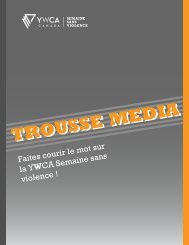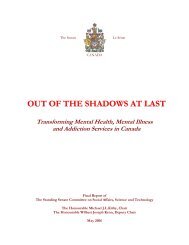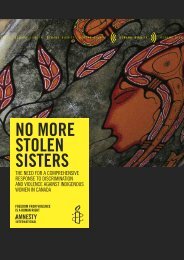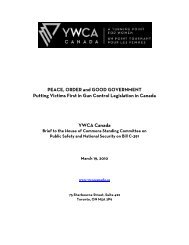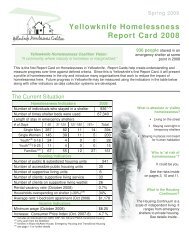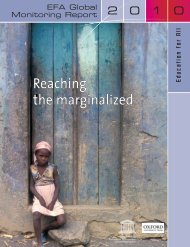The economic dimensions of interpersonal violence - libdoc.who.int ...
The economic dimensions of interpersonal violence - libdoc.who.int ...
The economic dimensions of interpersonal violence - libdoc.who.int ...
- No tags were found...
Create successful ePaper yourself
Turn your PDF publications into a flip-book with our unique Google optimized e-Paper software.
2. COSTS OF INTERPERSONAL VIOLENCECalifornia Medical Center found that 87% <strong>of</strong> the costs <strong>of</strong> treating gunshotwounds <strong>of</strong> the trunk were paid with public funds - with average hospital stays <strong>of</strong>6.8 days and costs <strong>of</strong> $10 600 per patient (Payne et al., 1993). Similarly, 80% <strong>of</strong>the direct medical costs for gunshot wounds, stab wounds and injuries fromassault at the San Francisco General Hospital in the mid-1980s were paid forwith public funds (Sumner, M<strong>int</strong>z & Brown, 1987). In a study <strong>of</strong> gunshot andstabbing wounds in a metropolitan trauma centre in Los Angeles county inCalifornia, the total collection rate for direct medical expenses - averaging$4 701 per case - was just 22% (Klein et al., 1999). Overall, in the USA, eachgunshot victim generated an estimated average <strong>of</strong> $9 209 in uncompensatedcosts (Physicians for Social Responsibility, 2002).<strong>The</strong>re is similar but less well-documented evidence <strong>of</strong> the effect <strong>of</strong> other types<strong>of</strong> <strong><strong>int</strong>erpersonal</strong> <strong>violence</strong> on public finances. Of the costs <strong>of</strong> medical care andlegal fees for burns suffered by child abuse victims in a study in Ohio, 65% werepaid with public funds (Evasovich et al., 1998). Clancy et al. (1994) found that70% <strong>of</strong> hospital charges for patients with assault-related penetrating injuries ata major medical centre in North Carolina were not reimbursed. Gunderson(1999) reported that 85% <strong>of</strong> the medical care costs <strong>of</strong> gun <strong>violence</strong> victims <strong>int</strong>he USA was paid from public sources.<strong>The</strong>re are fewer figures available <strong>int</strong>ernationally concerning the impact <strong>of</strong><strong>violence</strong> on public financing. Most high-income countries have a higherpercentage <strong>of</strong> public financing for health care in general than the USA where45% <strong>of</strong> health care costs were paid with public funds (World Bank, 2003). It istherefore likely that the corresponding contribution <strong>of</strong> the public sector to thecosts <strong>of</strong> <strong>violence</strong> was higher in these countries than in the studies from the USAcited above.In low- and middle-income countries, it is also probable that society in generalabsorbs much <strong>of</strong> the costs <strong>of</strong> <strong>violence</strong>. One study in Jamaica found that 90% <strong>of</strong>the costs <strong>of</strong> treating victims <strong>of</strong> <strong>violence</strong> at the Kingston Public Hospital -including materials, drugs and doctors' fees - were paid by the government(Mansingh & Ramphal, 1993).27








